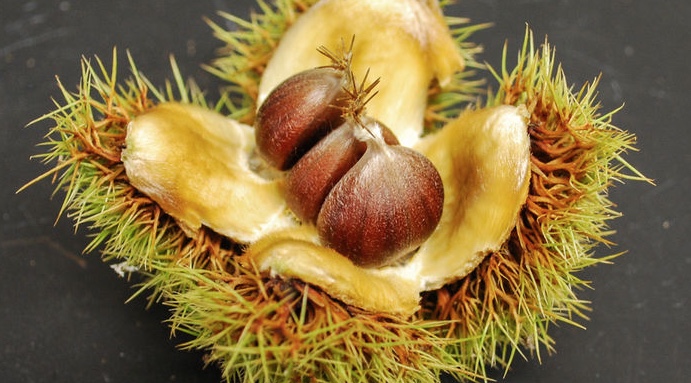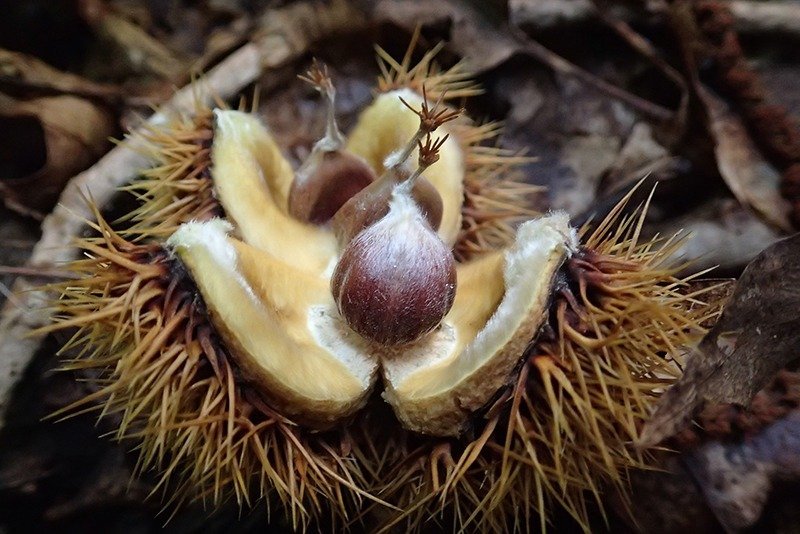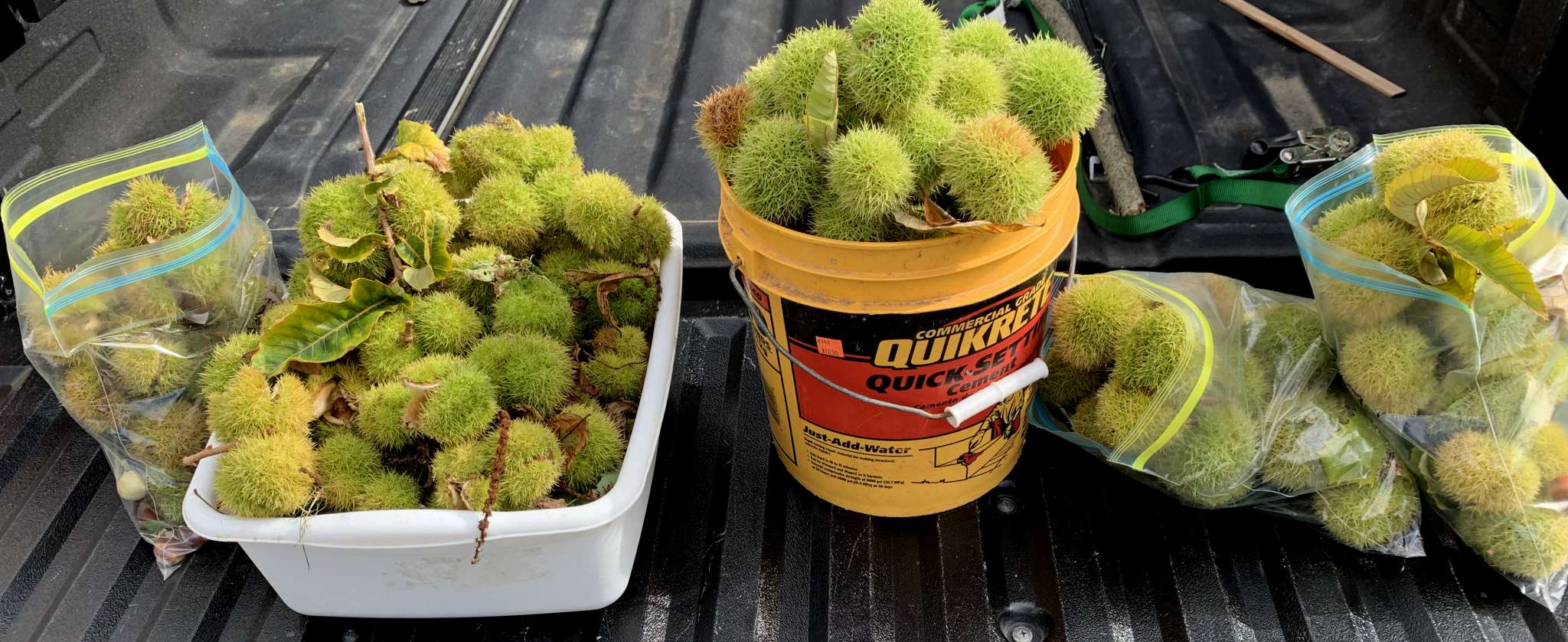
Contact us at gro.fcat@retpahCAV
About Us
The Virginia Chapter is actively engaged in efforts to bring the American chestnut back to Virginia’s forests. Our all-volunteer efforts include tree breeding, production seed orchards, nursery and greenhouse production of seedlings, and forest plantings of chestnuts. We also promote and educate about our restoration mission. Join and support us in our various activities across the Commonwealth.
Contact Us
Email: moc.liamg@tuntsehcav
The Regional Science Coordinator for Virginia is Cassie Stark. She can be contacted at her office in the Virginia Department of Forestry:
Email: gro.fcat@krats.eissac
900 Natural Resources Drive
Charlottesville, VA 22901
Cell (540) 217-6915
Donate to the Virginia Chapter
Make a one-time donation to support our restoration activities or schedule monthly donation to sustain our continuing operations.
Become a Sustaining Donor
Become a sustaining donor by putting us in your will, estate plans, or donating land for a breeding orchard. Without people like you, The American Chestnut Foundation wouldn’t exist as it does today.
The Chestnut Story
The American chestnut was once one of the most important trees in our eastern hardwood forests. It ranged from Maine to Georgia, and west to the prairies of Indiana and Illinois. It grew mixed with other species, often making up 25 percent of the hardwood forest. In the virgin forests of the Appalachian Mountains, the ridges were often pure chestnut. Mature trees could be 600 years old and average 4 to 5 feet in diameter and 80 to 100 feet tall. Specimens as large as 8 to10 feet in diameter were recorded.
The American chestnut’s annual production of highly nutritious nuts was extremely reliable. At the turn of the 20th century it was ranked as one of the most important wildlife plants in the East. Many wildlife species depended extensively on them. Bear, deer, wild turkey, squirrels, many birds and small mammals – and once, the huge flocks of passenger pigeons – all waxed fat for the winter in the chestnut forests.
Eastern rural economies depended on the nuts as well. Livestock were fattened on them, and the nuts were a major cash crop for many families in Appalachia. Railroad cars full were shipped to the big cities for the holidays, because of the high demand for this finest-flavored of all chestnuts.
The tree was also one of the best for timber. It grew straight and tall, often branch-free for 50 feet. Loggers tell of loading entire railroad cars with boards cut from just one tree. Straight-grained, lighter in weight than oak and more easily worked, it was as rot-resistant as redwood. It was used for virtually everything – telegraph poles, railroad ties, heavy construction, shingles, paneling, fine furniture, musical instruments, even pulp and plywood.
Then the chestnut blight struck. First discovered in 1904 in New York City, the lethal fungus–an Asian organism to which our native chestnuts had very little resistance–spread quickly. By 1950, except for the shrub-like sprouts the species continually produces (and which also usually become infected), the American chestnut had virtually disappeared from eastern forests. In Virginia, trees that have survived the blight are few and far between. While those that have survived are truly a beautiful sight to behold, they are disappearing quickly.
Multiple efforts are underway to bring this precious tree back. Recent developments in genetics and plant pathology promise that this magnificent tree will again become part of our natural heritage. The American Chestnut Foundation was created to coordinate a breeding program for the purpose of creating blight-resistant American chestnuts for eventual reforestation. TACF scientists are well on their way to developing a tree that is American in every way, with blight resistance borrowed from its Asian cousins. Virginia is one of several states that now have satellite breeding programs to ensure that blight-resistant trees will be suited to local environments.
Blight-resistant seeds and seedlings will not be available to the public for several more years. Meanwhile, individuals and organizations concerned about issues such as forest diversity and wildlife preservation are encouraged to plant chestnut seedlings that are not blight-resistant, for several reasons. First, planting seedlings is an important way to help preserve the chestnut genes that we might otherwise lose. It will also help call attention to the effort to bring back the tree. Also, by planting these seedlings, individuals and organizations gain knowledge about where and how to plant and care for chestnuts, in preparation for the widespread efforts that will be necessary once blight-resistant seeds and seedlings are available. Finally, it is important to note that if there are no blighted chestnut trees within a mile of where new seedlings are planted, blight is not likely to occur in the new trees for 10 to 20 years (20 to 40 feet of growth). Individual trees that do become blighted can be treated if the blight is caught and treated quickly.
Our Newsletter - The Bur
The Virginia Chapter’s semi-annual newsletter, The Bur, contains important stories about the progress we are making in our programs of planting and breeding American and hybrid chestnut trees in orchards and forests throughout the state.
Copies of The Bur can be downloaded in pdf format from the links below.
Download Issues of The Bur
Fall 2021
Spring 2021
Fall 2020
Spring 2020
Fall 2019
Spring 2019
Fall 2018
Spring 2018
Fall 2017
Spring 2017
Fall 2016
Spring 2016
Fall 2015
Spring 2014
Fall 2013
Spring 2013
Spring 2012
Fall 2011
Fall 2010
Spring 2010
Fall 2009
Spring 2009
Spring 2008
Fall 2007
Board of Directors
2025 Officers and Board of Directors
Cindy Ingram, President
Fred V. Hebard, PhD, Vice-President
Tom Wild, Secretary
John A. Scrivani, PhD, Treasurer
Darrell Blakenship
Steven Bodolay
Clem Carter
Zoe Bergman
Jack Lamonica
Bob Lawrence
Neal Grandy
Rob Porter
Tom Saielli
Rod Walker
Chapter History
The Virginia Chapter of TACF was formed in 2006. Virginia is in the heart of chestnut country and is estimated to have over 75 million surviving chestnut sprouts and a large porportion of large-surviving American chestnuts.
The Chapter partners with the Virginia Department of Forestry and helps with the large orchards at Lesesne State Forest, established in 1968, and the Matthews State Forest, established 1993. in
Virginia Chapter Menu
Latest News
Fall 2021 Newsletter Has Many Interesting Articles!
The Fall 2021 issue of The Bur, the Virginia Chapter's semi-annual newsletter, contains many interesting updates on our progress toward reestablishing the American chestnut to our forests. You can download it here. .
Spring Issue of The Bur Published
The Spring 2021 issue of The Bur is now available for downloading as a pdf file. This 12-page issue is packed with exciting news about our progress in re-establishing the American chestnut.
Fall Issue of The Bur Available
The Fall 2020 issue of the Virginia Chapter's newsletter, The Bur, is now available for downloading.




